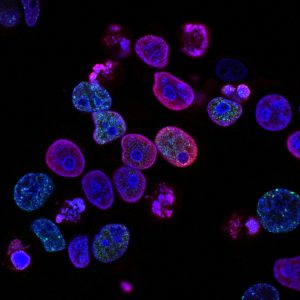Researchers are beginning to learn where the cancer cells in GBM originate from. Findings in this area of research could aid our approach to treatment and diagnosis. In this article we unpack the findings of a systematic review conducted by the University of Pittsburgh and how it identifies potential origins of GBM cells.
What are the findings? 
A team at the University of Pittsburgh have written a systematic review of the ‘subventricular zone’. Currently, it is thought that the subventricular zone is the place of origin for cells that cause brain tumours.
The cells in question are ‘neural stem cells’ and they are being evaluated to determine their role in tumour growth. Neural stem cells have a similar molecular profile to GBM cancer cells, leading the researchers to believe these cells are related. In further support of this theory, there are several other distinct characteristics which are exhibited in both kinds of cells.
What’s next?
This knowledge would aid future research modelling how tumours develop. It could potentially inform adaptations to treatment and diagnosis for better long term outcomes.
Cases of longer-term survival and response to treatment provide hope that increasing knowledge of the disease pathology can lead to treatments with improved survival.
To read the systematic review in full, click here.
Want to receive all the latest research straight to your inbox?
Sign-up our curated, jargon-free weekly research newsletter. Click here to fill out our contact form and select ‘research’ to opt into our research newsletter.
Get involved with research…
If you would like to use your experience and insight to support clinical research, consider signing up to be a PRIME advocate for brainstrust.
If you or someone you love is living with a brain tumour and have any questions around this latest news, or want to access support, give us a call on 01983 292 405 or email hello@brainstrust.org.uk. You can also visit our little brainstrust website which features support for children affected by brain tumour.





